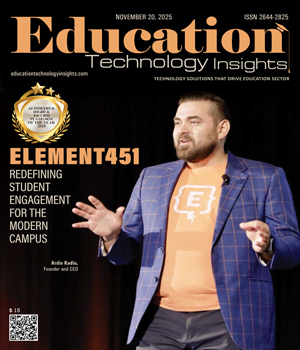THANK YOU FOR SUBSCRIBING
Be first to read the latest tech news, Industry Leader's Insights, and CIO interviews of medium and large enterprises exclusively from Education Technology Insights
Adopting New Technologies is The Future of Student Information Systems
Daryl Diamond, Director, Innovative Learning, Broward County Public Schools
Daryl Diamondis the Director of Training Implementation, Transition, Adoption, and Continuous improvement (TITAC) in the Broward County Public Schools.Having worked for the organization in so many roles, shenow leads a team that helps stakeholders and other directors within the IT division identify and procure technology solutions that are compatible with the digital ecosystem at Broward County. Her team also creates training regimen for all the end users and identify metrics to determine how well it was implemented, and revise it based on the outputs.
What are some of the major challenges that you faced?
The biggest challenge our school district faced while imparting education was dueto the Covid-19 pandemic. We were actually prepared for such calamity because of our heavy investment in the creation of a digital ecosystem, even prior to the pandemic. Afteran orientation program, we were able to continue teaching and learning throughout the two years.
This couldn’t prevent the impact the pandemic had on students, as they spent two years in seclusion during their formative years. Although technology played an important part in minimizing that impact, it became a stark reminder of that era. Distancing the use of technology from its pandemic era stigma was the real challenge that we faced.
Inappropriate and over usage of social media, which developed as a side effect of the pandemic,was another obstacle that we had to tackle. In the same spirit, we’re softening the transition towards the proper use of AI to make us more effective and efficient.
What are some of the project initiatives that you were a part of?
We are the sixth-largest public school system in the nation, but we were still using the very antiquated, COBOL based student information system. The process of upgrading a system for an organization of our size was a major undertaking in itself, forcing the project to be shelved for posterity. The changing times accompanied by the ever-increasing necessityfor a better system allowed us to finally tackle this issue and integrate the new student information system for the entire school district. We have been verifying compliance and the data transfer to the new system, and have already been involved in the training of the end users. The smooth progression of the projecthas given us the confidence to go live with the project the coming month, taking a leap from a relic of a system to a modern one.
The new systemwill revolutionize the user experience for everyone. Eighteen applicationsare being migrated into the platform, turning it into the sole portal for all the queries of the end users. For instance, if a parent or a guardian has multiple students studying in the county, they can access their information simultaneously through this one portal.
How are you working for the future of the student information space?
We at Broward County are a member of the 1edtech, formerly known as IMS Global.The membership introduces us to the other member suppliers enrolled with it. By virtueof being a part of the group, the suppliers are automatically vetted.They guide us in finding the applications which are best suited and which can be trusted with the security of our data.We are benefitted with the best-in-class teaching and learning digital resources out there as a perk of our membership.Collectively, it all leads to us having a better future.
We also help our students maintain a comprehensive learner record (CLR) in a digital wallet. It preserves their accomplishments, the extracurricular work that they do and the proofs of the skills that they possess. All their certificates and credentials are stored in a digital format at a single location, safekeeping their milestones throughout their studies and beyond.
What would be your piece of advice to your fellow peers?
You need to be flexible and possess the ability to pivot with the rapid growth of technology. With the advent of AI and the disruption that it has caused, we need to be proactive and ensure that we use it as a force for good, helping students and teachers maneuver the field of education. The way we teach, and the way we are being taught, has undergone monumental changes because of technology.Therefore, it’s in our interest to embrace the changing times, brought upon us by AI, while still preserving the humanity in teaching.
Read Also
Goldilocks Regulation
Beyond the Quiz: Redefining Competence in eLearning
Beyond Theory and Into Monday Morning: Enhancing Graduate Programs for Teachers
Safeguarding Students in the Age of Deepfakes: An Educational Imperative
Delivering Excellence in Education through Transformative School Leadership
Curriculum Innovation for Student Success and Institutional Growth

I agree We use cookies on this website to enhance your user experience. By clicking any link on this page you are giving your consent for us to set cookies. More info






















